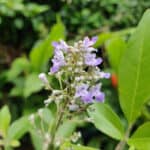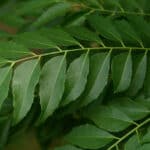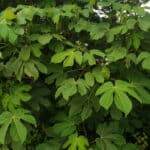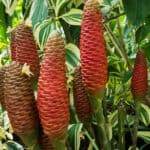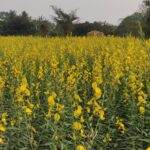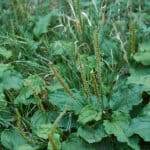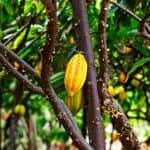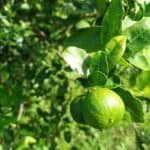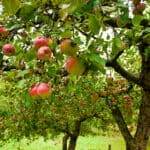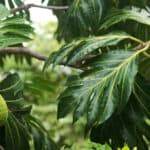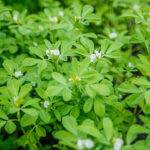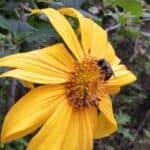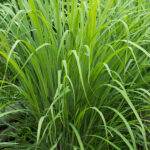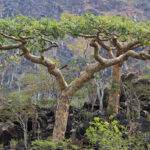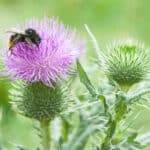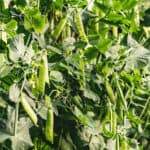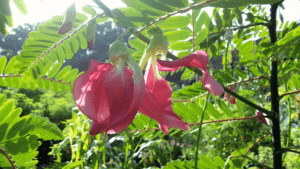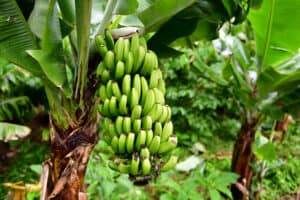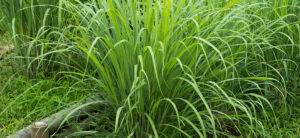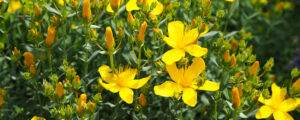Sesbania Grandiflora, the Hummingbird of the Bean Family!

A member of the bean or legume family (Fabaceae or Leguminosae), Sesbania Grandiflora is highly celebrated for its nitrogen-fixing properties and delicious flowers and beans. It is a drought tolerant & vigorously growing plant, making it a go-to companion for regenerative practitioners as it provides multiple benefits like being a source of food, green manure, green cover, cattle fodder, medicine, and great wildlife and birds and bees attractor.
The Origin of Sesbania Grandiflora
It is said that Sesbania Grandiflora is native to tropical Asia and Northern Australia, however, it is common across tropical Asia, from India, through Myanmar and Malaysia to Indonesia and Srilanka.
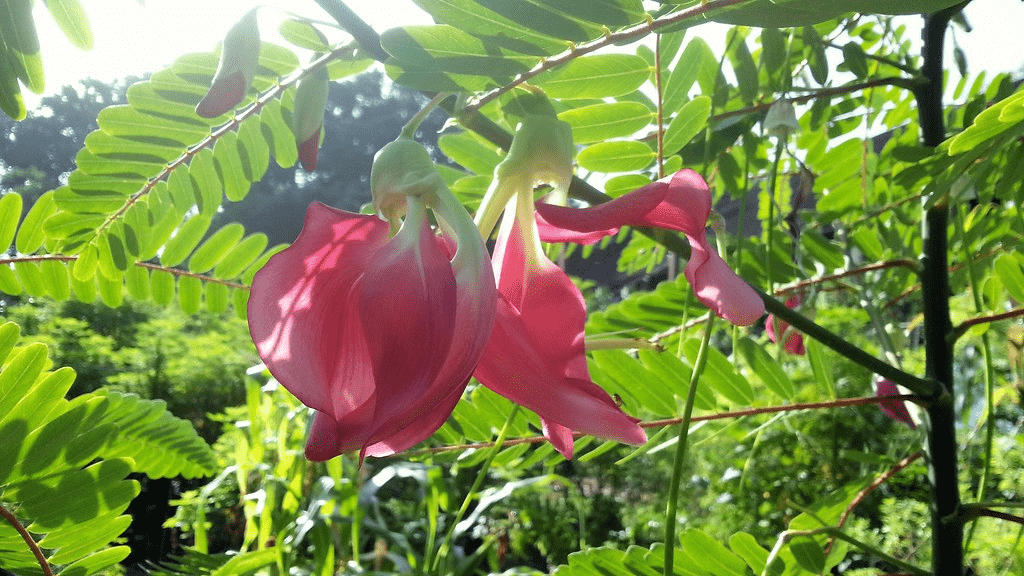
It primarily grows in hot and humid tropical zones throughout the world. It is a perennial and plant with a lifespan of around 20 years. The branches are loose topped by an open crown. with loose branches and an open crown. The height ranges from 10 to 15m with rounded leaves, flowers ranging in colours, most common being red and white. Just like any other member of the legume family, the fruits are bean-like, flat and elongated.
Looking at the flowers, it becomes pretty clear as to why it is also called Vegetable Hummingbird.
Some of the other common names are Flamingo Bill, Parrot Flower, Scarlet Wistaria, White Dragon Tree, Sesban Large Flowered Agato. In India it’s called Agathi in Hindi, Agasti in Nepali, Agasta in Tibetan, Hatga in Marathi, Agathio in Gujarati, and Akatti in Malayalam.
The Grandiflora (grand-dee-florl-uh) part of its botanical name means large-flowered.
The leaves & flowers of Sesbania are extensively harvested as edibles and white flowers are preferred to red. The leaves have an acrid, slightly bitter, and astringent taste.
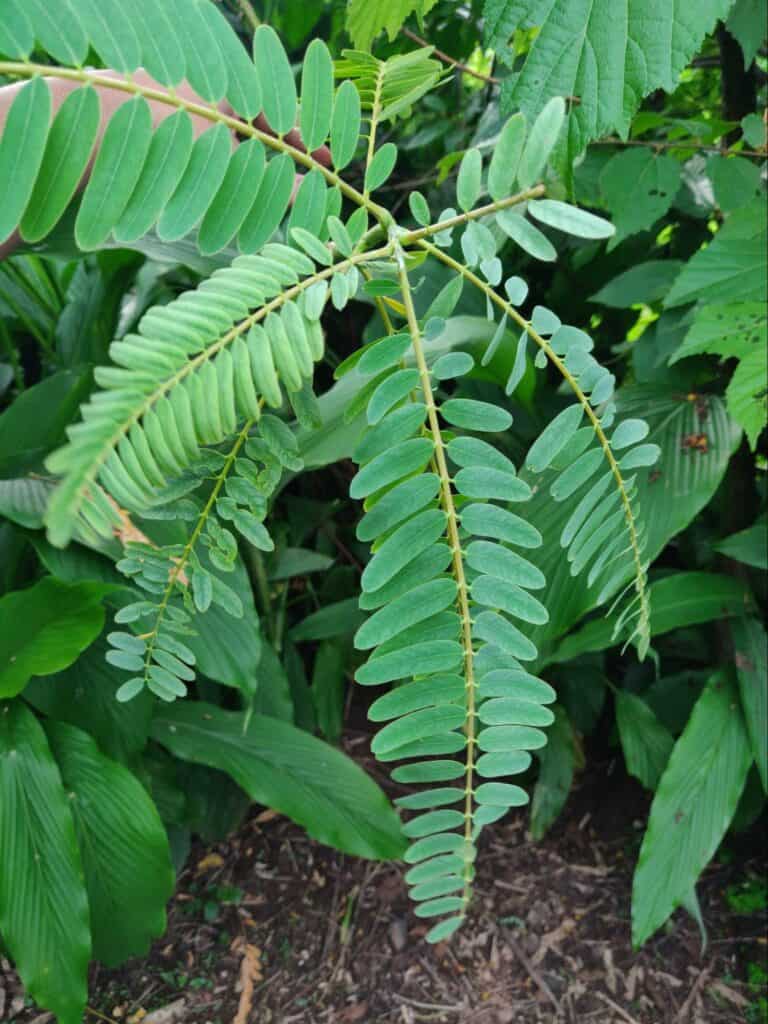
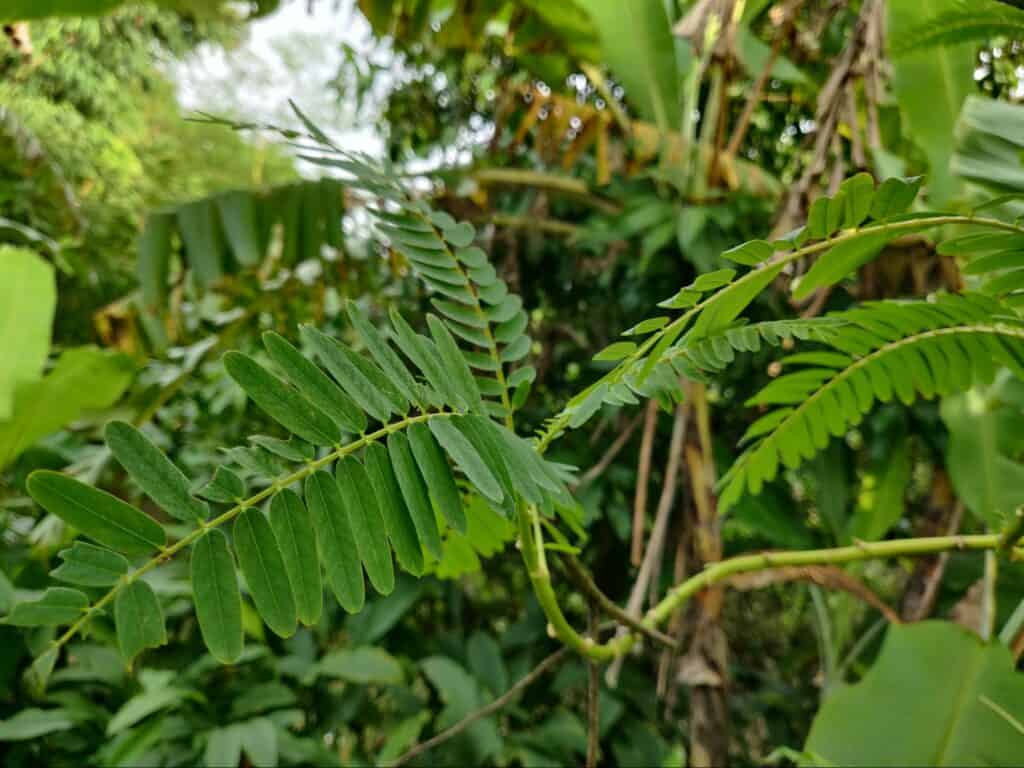
Regenerative Properties of Sesbania Grandiflora
Even though SG is commonly planted as an ornamental across the world because of its mighty showy flowers and long pods, its diverse properties do stand out helping serve regenerative purposes.
Fixing Atmospheric Nitrogen into the soils
Like any other tree belonging to the bean family or legume family, SG has a high affinity for association with nitrogen-fixing Rhizobia, the bacteria forms numerous large root nodules which help fix nitrogen by taking in nitrogen from of the atmosphere and converting it into a form of plant available nitrogen for the host plant and later to other plants around it.
Nitrogen fixation enables it to grow vigorously in nutrient-deficient soils, making it a great remedy for soil building and preparing the farms or land for the next crop by acting as a pioneer species.
Helping Build Soils
Being an excellent biomass plant, it is planted on paddy bunds, and around farms or cropping fields for its nitrogen contribution and simultaneously the fruits, falling leaflets, and flowers make excellent green manure and mulch, thus helping improve soil fertility.
Due to its light-demanding and fast-growing nature, it can also be sown densely as green manure, grown for a relatively short period, before pruning it or ploughing under to improve the soil before planting other food crops.
SG is preferred for rehabilitating eroded slopes & hills supported by minimal irrigation during dry summers for sandy loam soils.
Repeated chop and drop leads to vigorous resprouting which helps maintain and improve the soil organic matter.
An Excellent Shade and Support Provider
SG grows a sufficiently dense canopy, letting enough sun pass through, making it suitable as a shade or nurse tree for plants such as black pepper, coffee, tea, and cocoa.
It is used as a shelterbelt, or as a live support or live trellis for vines & climbers.
It can also be used as a live shade for plant nurseries. In permaculture design, it is also planted with newly planted fruit trees in the fruit orchard to provide shade in the initial years as the fruit trees establish and are used as a chop and drop simultaneously.
As a drought tolerant crop
SG is tolerant to drought however, it does need some amount of moisture & water during extreme dry periods.
Essential for Integrated Farming
Sesbenia is intercropped as a fodder tree, mostly along the edges of fields, on bunds and in semi shaded areas of the farm.
Vegetable hummingbird is also planted at high densities to produce pole timber, or sparsely to produce dry season forage and fuelwood.
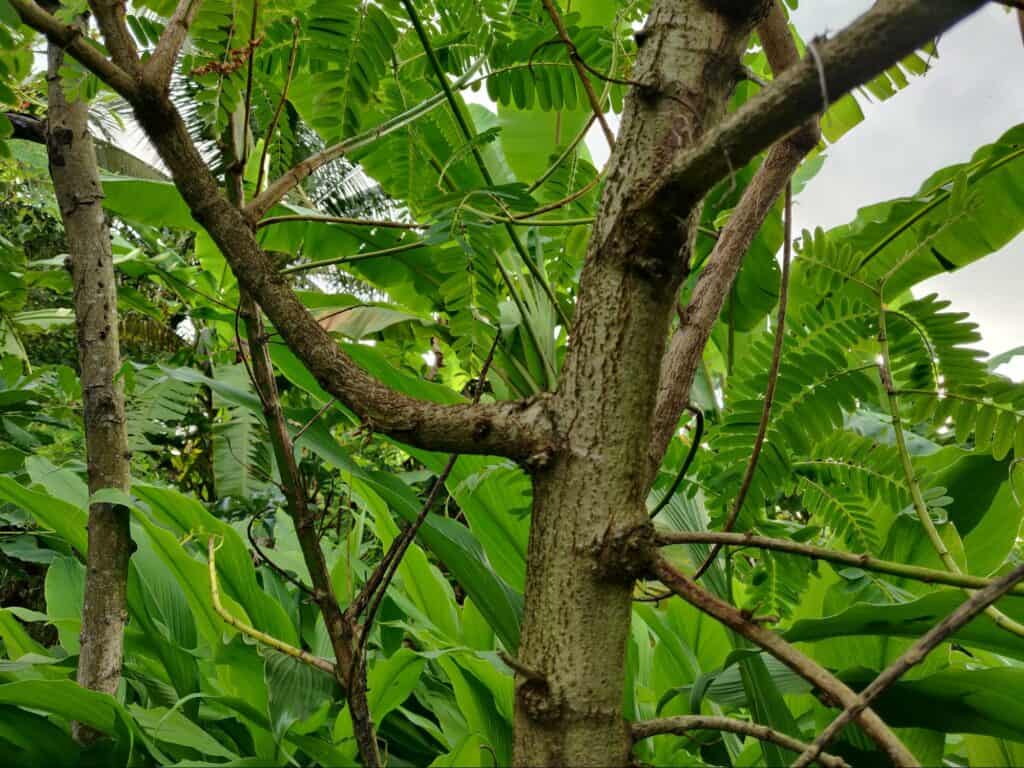
Edible & Medicinal Usage
It is a good source of nutrients, vitamins and minerals such as Vitamin C, Vitamin B9, Iron, Selenium, Vitamin B1 and Vitamin B2. It also contains amino acids like Tryptophan,Threonine, Isoleucine, Leucine and Lysine.
Edible Uses
Young foliage is cooked as vegetables. It is high in protein. In India they are sauteed with garlic, turmeric, moong daal, mustard seeds, onion, green chillies asafoetida and sea salt.
The white variety is preferred for edible flowers. The unopened flowers are either cooked as a vegetable or are dipped into chickpea batter and deep fried as pakoras.
Cooking Tips
The calyx and stamen of the flowers are removed before cooking to avoid the bitter taste.
To avoid stomach pain, it is consumed in smaller proportions and usually cooked with garlic and coconut.
Note: Mature seeds are not consumed.
Medicinal Uses
In Ayurveda, Sesbenia is said to help lower blood pressure and help keep arteries flexible. It supports foetal development and is beneficial for skin. It also boosts immunity and prevents Alzheimer’s disease, migraine and weakness.
Dried SG leaves are stored and consumed as tea to help treat viral infections, inflammation and worms infestation.
Preparation from the roots and bark of the plant are also used for external application over the body for treating skin problems, to reduce inflammation and pain because of it’s cooling properties.
Leaf paste is applied to treat oral and throat problems.
Leaf juice is used in nasya for epileptic sufferers, an ayurvedic procedure related to the nose, in which medicine is applied through the nasal cavity or route.
Crushed leaves are applied as a dressing to sprains and bruises, swellings, rheumatism, itching and more.
The root extract is a well-known medicine for malaria in India.
How to grow Sesbenia Grandiflora
SG is much faster to establish compared with other common tree legumes making it one of the easiest one to grow and care for.
Starting from seeds:
- SG is easily reproduced by seeds. It does not need particular pretreatments as such.
- The seeds need to be collected from the mature seed pods and sown before the wet season, directly into soil or raised in a nursery using a draining loam maintained humid at the temperature of 24-26 °C.
- They germinate with little moisture & without any nutrients as well, throughout the year (frost-free seasons only)
- It takes around 10-15 days for germination, and can be transplanted after 1 month of germination.
In nature, the long-range dispersal of seeds occurs through the light and floatable water-borne pods being carried downstream. Seeds are then released as the pods become weathered and disintegrate.
Via Vegetative Propagation:
Vegetative propagation of SG can be done from stem and branch cuttings, they can be taken from mature plants and rooting can be initiated in the nursery before transplantation.
Air Layering is also a possibility however, propagation via seeds provides best results with higher success rates.
In India, cuttings are directly planted in the field at the beginning of the rainy season as individual trees or in rows, spaced 1 to 2 m apart along fences, field borders and the bunds of rice paddies.
Caring for Sesbania
Soil
SG can flourish in fertile, moist, well-drained moderately and light soils. However, it is tolerant and it succeeds in light sandy, medium, heavy clayey and low fertility soils is tolerant to poor soils.
In fertile soils, it can attain a height of 5 to 6 m within a year however, the height increment is greatly reduced in the second year.
Other caring tips
- SG lacks tolerance for cold temperatures ranging below 10°c.
- It grows rapidly during the wet season.
- For best growth, choose a sunny spot.
- It is not wind tolerant.
- It cannot stand water stagnations.
You can expect your first SG bloom within a year 🙂
Harvesting Tips
- SG leaves can be harvested repeatedly as tender greens for cooking and other medicinal purposes.
- Flowers to be harvested before they open entirely for cooking.
- Seeds are to be harvested from dried pods.
- The barks can be chopped and dried as a source of firewood however they do not produce coal and burn into ashes.
Seed Saving Tips
- Seeds need to be stored in airtight containers during monsoon to avoid germination as they are prone to germinating with minimal moisture.
- Seeds can be stored by adding in ash to help absorb moisture and prevent pest infestation.
In conclusion, apart from being a nitrogen fixer tree, Sesbania Grandiflora supports multiple functions ranging from green manuring, birds and bees habitat to providing food and medicine making it a low maintenance and high yielding species to include in both permaculture design as well as conventional farming. In Fact it is a great one for helping farmers transition from monoculture to regenerative farming by introducing sesbania as a supportive species to main crop for obtaining an additional yield and reducing the dependency on commercial fertilisers.
Its vigorously growing nature also helps farmers experience the transformation and benefits in a smaller period of time, which makes it a suitable pioneer species for distressed land or projects which demand visible results in a shorter period of time.
Unlike any other fast-growing species though, it is advised to monitor the behavior when introduced to a foreign land to ensure that it doesn’t act as a threat to the local ecosystem.


